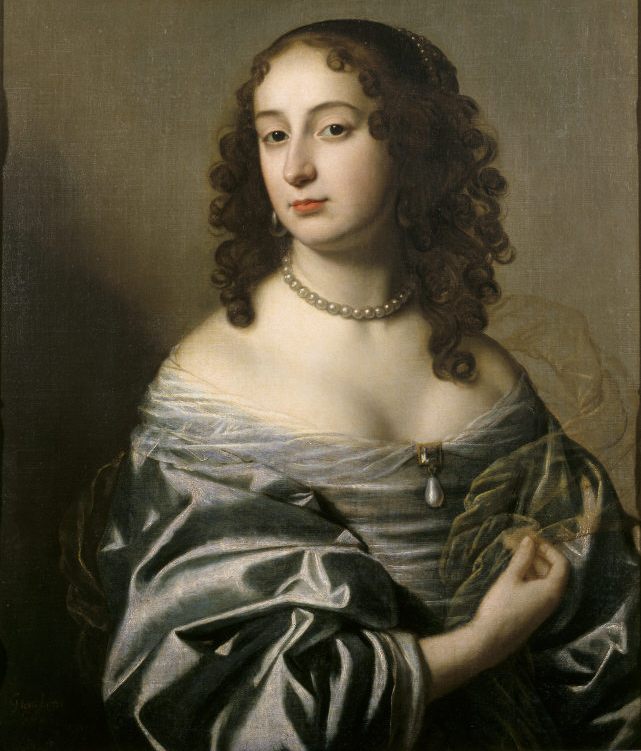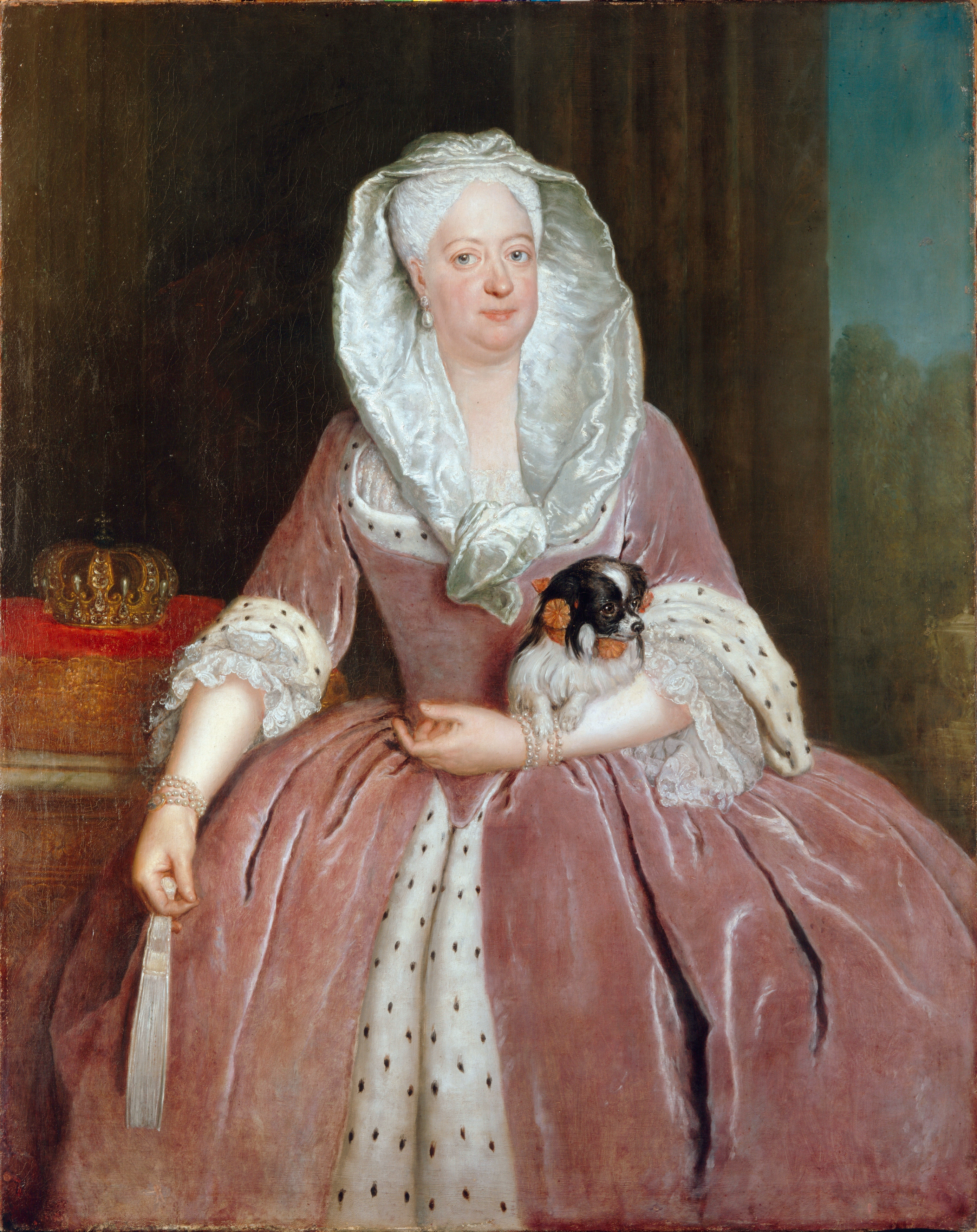by Susan Flantzer © Unofficial Royalty 2013
Sophia of the Palatinate, Electress Sophia of Hanover, Credit – Wikipedia
If the Stuarts had been able to provide a Protestant heir to the British throne, Sophia of Hanover would not have become possibly the most famous footnote in British royal history. Princess Sophia of the Palatinate was born on October 14, 1630, at the Wassenaer Hof in The Hague, Dutch Republic, now in the Netherlands, where her parents were in exile during the Thirty Years War. Her father was Friedrich V, Elector Palatine, but Sophia’s more important dynastic line was through her mother. Her mother was Elizabeth Stuart, the second child and eldest daughter of James VI and I, King of Scotland, England, and Ireland, and his wife Anne of Denmark.
Sophie had twelve siblings:
- Heinrich Friedrich, Hereditary Prince of the Palatinate (1614 – 1629), unmarried, drowned
- Karl I Ludwig, Elector Palatine (1617 – 1680), married (1) Charlotte of Hesse-Kassel, had issue including Elizabeth Charlotte, second wife of Philippe, Duke of Orléans, younger brother of King Louis XIV of France; (2) morganatically, Marie Luise von Degenfeld, had issue; (3) morganatically, Elisabeth Hollander von Bernau, had issue
- Elisabeth of the Palatinate (1618 – 1680), unmarried, Princess-Abbess of Herford Abbey
- Rupert, Count Palatine of the Rhine (1619 – 1682), unmarried, had two illegitimate children
- Maurice of the Palatinate (1620 – 1652), unmarried, drowned
- Louise Hollandine of the Palatinate (1622 – 1709), unmarried, converted to Roman Catholicism, was a nun and then abbess at the Cistercian Maubuisson Abbey
- Ludwig of the Palatinate (born and died 1624)
- Edward, Count Palatine of Simmern (1625 – 1663), converted to Roman Catholicism, married Anna Gonzaga, had issue
- Henriette Marie of the Palatinate (1626 – 1651), married Sigismund Rákóczi, no issue
- Johann Philip Friedrich of the Palatinate (1627 – 1650), unmarried, killed in battle
- Charlotte of the Palatinate (1628 – 1631), died in childhood
- Gustavus Adolphus of the Palatinate (1632 – 1641), died in childhood
Sophia married Ernst August, Elector of Brunswick-Lüneburg, on September 30, 1658. Ernst August became the first Elector of Hanover in 1692.
Sophia and Ernst August had seven children:
- King George I of Great Britain (1660–1727), married and divorced Sophia Dorothea of Celle, had two children: King George II of Great Britain and Sophia Dorothea of Hanover, Queen of Prussia, who married Friedrich Wilhelm I, King in Prussia
- Frederick Augustus of Brunswick-Lüneburg (1661–91), Imperial General, killed in battle, unmarried
- Maximilian Wilhelm of Brunswick-Lüneburg (1666–1726), Field Marshal in the Imperial Army, unmarried
- Sophia Charlotte, Queen in Prussia (1668-1705), married (second wife) King Friedrich I in Prussia, had two children
- Carl Philip of Brunswick-Lüneburg (1669–90), Colonel in the Imperial Army, unmarried
- Christian Henry of Brunswick-Lüneburg (1671–1703), unmarried
- Ernst August of Brunswick-Lüneburg (1674–1728), Duke of York and Albany, Prince-Bishop of Osnabrück, unmarried

Sophia in 1650; Credit – Wikipedia
Sophia was intelligent and well-read. She was an admirer of the German philosopher and mathematician Gottfried Leibniz, and the two regularly corresponded. Sophia and her husband did much work improving the Hanover ancestral home at Herrenhausen, particularly the beautiful gardens.

Palace of Herrenhausen and the Great Garden, circa 1708; Credit – Wikipedia
The Stuarts came to the British throne after the death of Queen Elizabeth I. King James VI of Scotland, the son of Mary, Queen of Scots, was the great-grandson of Margaret Tudor (the sister of King Henry VIII), and upon Elizabeth’s death became King James I of England. James I was succeeded by his son, King Charles I, who was beheaded during the English Civil War. Oliver Cromwell ruled as Lord Protector for eleven years until the monarchy was restored in 1660 and Charles I’s son became King Charles II. Despite having at least fourteen illegitimate children by his mistresses, Charles II and his wife, Catherine of Braganza, had no children. Charles II was succeeded by his brother, King James II, in 1685.
King James II had eight children with his first wife Anne Hyde, who died before he became king. Only two of the eight children survived childhood: the future Queen Mary II and the future Queen Anne. James converted to Catholicism in 1668 or 1669 during his first marriage, kept his conversion secret, and continued to attend Church of England services until 1673 when his conversion became public. Charles II refused to allow James’ daughters from his first marriage to become Catholic. James married again to the Catholic Maria Beatrice of Modena, and all their children born between 1675 and 1682 died young. The birth of James Francis Edward, a Catholic son of James and Maria Beatrice of Modena, in 1688 precipitated the Glorious Revolution which placed James’ elder daughter Mary and her husband and first cousin William III, Prince of Orange, jointly on the throne as the Protestant monarchs King William III and Queen Mary II.
William and Mary had married in 1677. William was the only child of Mary, Princess Royal, the daughter of King Charles I, and therefore was Mary’s first cousin. Mary suffered a miscarriage early in her marriage, which may have left her unable to have children. She had several periods of illness, which may have also been miscarriages. Mary’s inability to have children caused her great grief. Queen Mary II died of smallpox in 1694 at the age of 32. King William III reigned until he died in 1702, and was succeeded by Anne, the younger daughter of King James II.
Queen Anne married George of Denmark in 1683. Anne had 17 pregnancies and tragically, only three of the pregnancies resulted in children who lived longer than a few days. The promise of the Stuart succession was with Anne’s only surviving child, Prince William, Duke of Gloucester. Prince William was a sickly child and probably had hydrocephalus. Less than a week after his 11th birthday, Prince William died, and there was a succession crisis as his mother was the only person remaining in the Protestant line to the throne established by the Bill of Rights of 1689.
Sophia of Hanover’s family was the most junior of the Stuart lines, but was the most Protestant. In 1701, Parliament passed the Act of Settlement, giving the succession to the British throne to Sophia and her non-Catholic heirs. This act ensured the Protestant succession and bypassed many Catholics with a better hereditary claim to the throne.
On June 5, 1714, 83-year-old Sophia fell ill after receiving an angry letter from Queen Anne. Two days later, while she was walking in the gardens of Schloss Herrenhausen, it began to rain quite heavily, and Sophia ran to a shelter where she collapsed. Sophia of the Palatinate, Electress of Hanover, died on June 8, 1714, at Schloss Herrenhausen in Hanover, Electorate of Hanover, now in Lower Saxony, Germany. She was initially buried at the Chapel of Leineschloss in Hanover, which was destroyed during World War II. In 1957, her remains were moved to the mausoleum of King Ernst August I of Hanover in the Berggarten of Herrenhausen Gardens. She narrowly missed becoming queen, having died two months before Queen Anne. Sophia’s son, George, Elector of Hanover, became King George I.

Berggarten Mausoleum at Schloss Herrenhausen in Hanover, Germany; Credit – Wikipedia
This article is the intellectual property of Unofficial Royalty and is NOT TO BE COPIED, EDITED, OR POSTED IN ANY FORM ON ANOTHER WEBSITE under any circumstances. It is permissible to use a link that directs to Unofficial Royalty.







